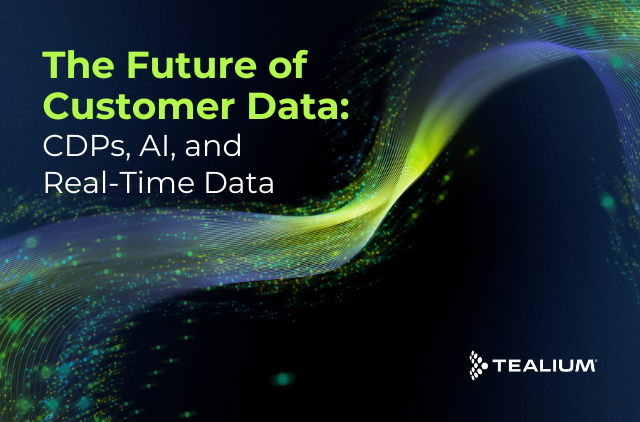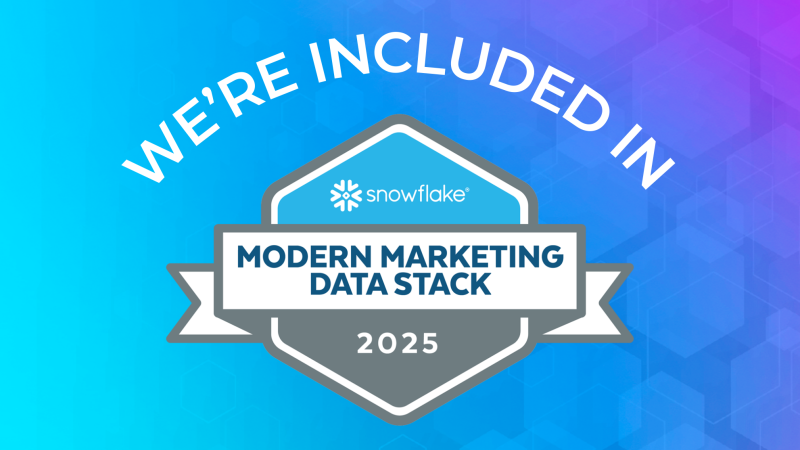How Customer Data Platforms (CDPs) are Defining the Organization of the Future
Blueprints for Structuring Your Customer Data Team
For our latest eBook “The Organization of the Future: A Blueprint for Structuring Your Optimal Customer Data Team (+ Sample Org Charts!)” we interviewed a wide range of CDP experts and global organizations from different industries and sizes to understand how organizations are successfully evolving their teams and processes when they adopt Customer Data Platforms (CDPs).
There is no question – customer data is king. When properly collected and activated, it can deliver amazing real-time customer experiences, empower the highest quality customer service, drive incredible business insights for your IT and data teams, enable new product innovations, and unlock powerful insights and opportunities for sales. 
While putting customer data at the core of your organization makes perfect sense in theory, operationally, it has been a challenge to execute – especially at scale. The technology, process, and people are all real factors that have made the dream of executing real-time one-to-one experiences a real challenge. However, Customer Data Platforms (CDPs) have changed the game.
A CDP collects trusted customer data from all your sources (offline, digital, legacy databases, etc.), compiles it into a single view of your customer, and then activates the data via omni channels such as email, website personalization, digital ads, etc. This technology can also break down internal silos and enable cutting-edge, even futuristic advancements in all areas of your business.
Since CDPs are relatively new, organizations are seeking expert guidance on how to not only deploy and manage a CDP, but also how to structure their teams, recalibrate their processes, and set up their organization for maximum success with a powerful technology that can propel their organization into the future.
Why Technology Is Not the Only Consideration
Adopting a CDP is the first step in a digital transformative journey, but it is only one leg of the stool. It is also critical to ensure your organization has the right processes and people to drive positive business outcomes. Otherwise, your CDP solution will not be providing the value promised and will become just another shelfware solution gathering “digital dust.”
Your People

Whether you tap internal employees to staff your CDP team or hire externally, it’s critical to find not only the right skill sets but the right mindsets as well. Curious people with a knack for technology, strategy, and data analytics are the people you’ll want at the helm of your CDP initiative. There will be the day-to-day users of your CDP (e.g. technical marketers or data analysts) as well as executive stakeholders who may require insights from your CDP, but are not logging in regularly. To successfully manage a CDP, you will need involvement and collaboration across departments and leverage the skill sets from numerous teams, both on the day-to-day operation of the platform and the high-level stakeholders helping to identify use cases. It is important to identify key roles within your customer data team including who will require access daily, versus who will need insights.
“When structuring your CDP team, it’s really less about who owns the CDP – you will have to get over the land grab mentality and consider how the CDP best fits the organization. At our company we created a new team that could speak to both IT and Marketing.”
– Director of eCommerce Analytics, Global Retail Organization
Some of the common roles found on the CDP Teams include:
- Chief Data Officer or Chief Marketing Officer Strategizes the use cases across the organization and acts as the single voice linking the back office investment and the front office revenue
- CDP Demand Management Leads – Dedicated to each brand or department within the organization to determine what data is needed to create each use case
- Data Architecture Director – Establishes the overall data design
- CDP Architect – Sets up and operates the platform integrations and maintains customer profiles and audiences
- Project Manager – Coordinates resources, manages deliverables, maintains timelines
- CDP Analyst – Organizes audiences and runs predictions
- Data Source Engineer – Manages data sources including web, mobile, CRM, etc.
- CDP Tech – Sets up and manages the platform
Check out 10 CDP organizational chart structures and key roles and responsibilities that can drive success in “The Organization of the Future”
Your Processes
It is important to create a customer data steering committee or core team who meets regularly to define and prioritize use cases and business outcomes. The committee should agree to start with a few high-value use cases that can quickly drive positive business outcomes. No need to boil the ocean, start small and get some early wins on the board!
This team is also critical in the process of identifying the types of data your organization collects (unstructured, structured, online, offline, etc.), where it is stored, and how it is analyzed across departments. This is a critical success factor for implementing your CDP as your customer data is your biggest asset.
Your Teams
When it comes to where your Customer Data Platform should live in your organization, CDP teams are regularly found in each of these departments: 
- Marketing (they power and activate the data)
- Data and Analytics (they organize the data and produce transformative insights)
- IT (they integrate the data across the architecture and drive Machine Learning and Artificial Intelligence)
- Product (they define the business goals achieved through the CDP).
And beyond mere ownership, the CDP can produce amazingly positive impacts to other teams across the entire organization, so it’s as important to establish buy-in, key stakeholders, and access to the customer data in the CDP for all teams.
This eBook shares proven examples on how to successfully structure internal teams (including ideas around talent) and tips for updating internal processes to ensure your organization will drive the maximum value out of a CDP.
In this eBook, we provide 10 sample org charts:
- Data Center of Excellence Organizational Structure
- Data Led CDP Team Structure
- Marketing Led CDP Team Structure
- IT Led CDP Team Structure
- Product Led CDP Team Structure
- Multi-Brand Enterprise CDP Team Structure
- Mid-Sized Business CDP Team Structure
- 2x Agency Supported CDP Team Structures
- Highly Regulated Industry CDP Team Structure
Bonus content also found in “The Organization of the Future” includes:
- 5 reasons why customer data and CDPs are critical now
- Tips on how to organize your customer data teams
- Key factors that impact the structure of a CDP team
- How to get started building your team and tips for finding top talent
- Ways to create successful communication and break down departmental silos
- Why you need a Data Center of Excellence and how to make it successful
The Organization of the Future: A Blueprint for Structuring Your Optimal Customer Data Team (+ Sample Org Charts!) can be downloaded in full here.







